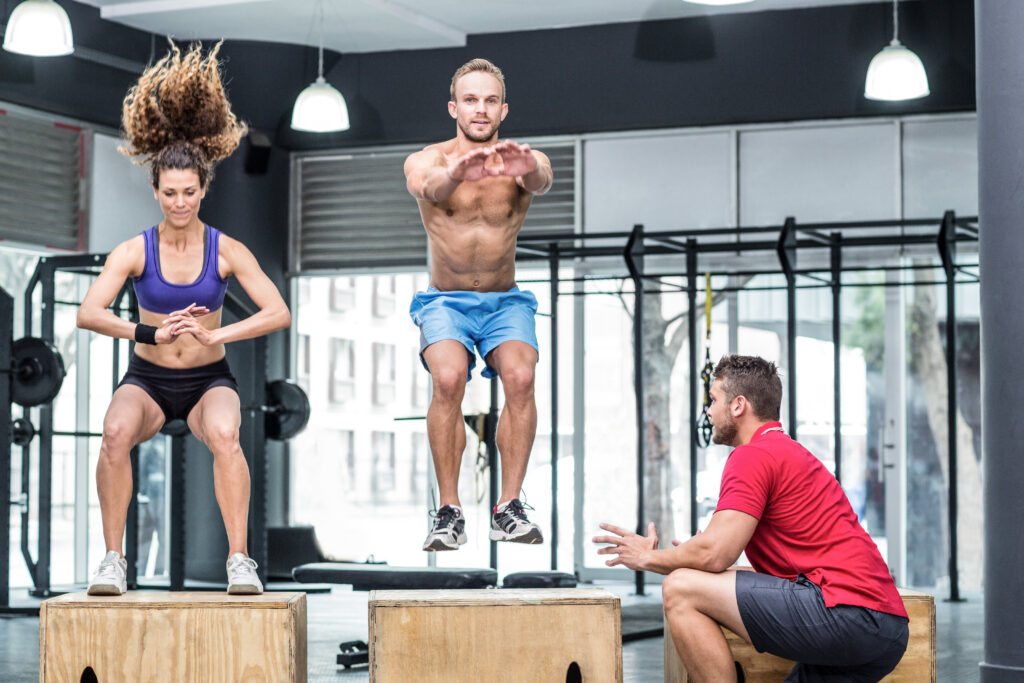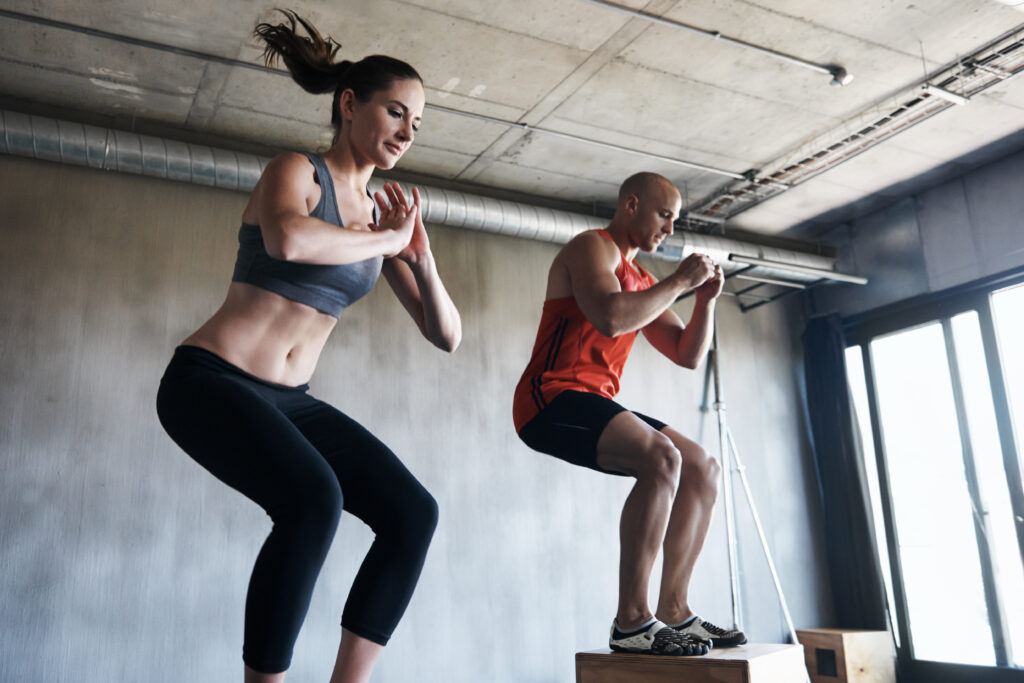Introduction
Are you looking to improve your athletic performance and jump higher than ever? A powerful vertical jump is more than just a flashy skill. It’s a sign of strong, coordinated and explosive legs. It reflects your ability to generate force quickly, which is essential for success in almost any sport. Developing that kind of power requires smart training, and one of the most effective tools for that is plyometrics.
What Should You Know About Plyometric Training?
Plyometric exercises use fast, explosive movements to train your muscles to exert maximum force in short bursts. The quick transition from the eccentric to the concentric phase of the movement is a stretch-shortening cycle (SSC). Plyometrics refers to any exercises that require you to stretch and contract muscle groups repeatedly and rapidly.
You may be familiar with some of the most common plyometric exercises — box jumps, jump squats and burpees. These are high-intensity, explosive movements that help improve power, speed and agility. Additionally, they ensure a well-rounded, full-body workout that targets all major muscle groups and produces excellent results. Lastly, this training style increases neuromuscular coordination by training the nervous system and making movements more automatic during activity.
How Do Plyometrics Benefit You?
In addition to increasing your jump height, plyometrics can improve many other physical aspects such as strength and jump height, agility, sprint speed, kicking performance and endurance. It teaches your body to work muscles more efficiently and move with more precision. So, while improving your jump may help you spike higher or dunk easier, it also means you’re becoming a stronger, faster and better athlete in general.
Coaches first employed plyometric exercises to help track and field athletes develop their explosive power and vertical leap. Today, these exercises are commonly included in jump training programs.
What Are the Best Plyometric Exercises for Vertical Jumps?
Plyometric exercises for vertical jumps aim to enhance explosive power, agility and coordination, offering a comprehensive workout that engages many muscle groups. These exercises recruit more muscle fibers in your glutes, hamstrings and calves:
- Seated box jumps: This workout enhances explosive power and boosts your vertical jump ability.
- Depth box jumps: They enhance the body’s capacity to produce force rapidly, which is advantageous for athletic performance.
- Push-up to box jump: It enhances strength in the upper body, boosts explosive power and improves cardiovascular health.
- Kneeling jump to box jump: It demands a strong core engagement, enhancing stability and coordination.
- Burpee box jump over: It offers a comprehensive workout for the entire body, enhancing endurance and coordination.
Keep track of your vertical jump height, how high you can leap or how quickly you can complete drills. Even small improvements indicate that your body is adapting to the training. Monitoring your progress can increase motivation and make it easier to recognize changes.

When you engage in plyometrics, remember that these are high-impact movements and require focus and preparation. Jumping without proper form or overload progression can lead to injuries that can slow your training.
What Are the Best Practices for Safe Plyometric Training?
When you engage in plyometrics, remember that these are high-impact movements and require focus and preparation. Jumping without proper form or overload progression can lead to injuries that can slow your training.
One of the most overlooked aspects of plyometric training is proper warm up and cool-down. These high-impact, explosive movements demand a lot from your muscles and joints — and jumping straight in without preparation can lead to injury or poor performance. A structured routine before and after your session makes a big difference. The dynamic warm-ups exercises play a pivotal role in injury prevention by preparing the body both physically and mentally for physical activity.
Another good practice is an active cool-down, as it can theoretically reduce the risk of injuries and less neuromuscular fatigue during later training sessions.
Nutrition Tips for Plyometric Training
Since plyometrics involves high-intensity bursts of energy, proper nutrition can help your body perform its best. About 30-45 minutes before your workout, eat something that provides a quick carbohydrate boost, like a banana or granola. If you also plan on doing strength training along with your plyometrics routine, add some protein, like peanut butter, to your pre-workout snack. This will help with muscle recovery after your workout. Just be sure to avoid foods with high fat and fiber that can make you feel overly full and cause discomfort during a workout.
After your workout, you don’t need to eat right away. However, if you’re hungry, opt for a smoothie, turkey sandwich, low-fat milk or another protein-rich snack to aid in muscle repair and recovery.
How Can You Balance Plyometrics With Strength Training?
When paired with traditional strength exercises such as squats or deadlifts, plyometrics enhance your power output significantly. Strength training develops your foundational strength, while plyometrics trains your body to utilize that strength rapidly. This combination leads to quicker progress and a lower chance of injury.
One of the most critical reasons to avoid plyometrics is the lack of foundational strength or a solid training base in the athlete, which is essential for effectively implementing a plyometric program. In fact, if an athlete satisfies the established minimum criteria in regards to foundational strength or training base, they may lack the necessary coordination and motor control to advance to high-intensity plyometric exercises.
Why Does Core Strength Matter for Jumping?
Stability is important for any type of sports activity — including running, jumping or throwing — as a strong core can improve stability and efficiency of movements. The core is important to provide local strength and balance and to decrease back injury. In addition, since the core is central to almost all kinetic chains of sports activities, control of core strength, balance and motion will maximize all upper and lower extremity function kinetic chains.
Systematic core muscle training can lead to significant improvements in athletes’ performance in high-explosive sports like vertical jumping, sprinting, and weightlifting. This improvement is due to the way core workouts increase muscle strength, endurance, and coordination, which are essential for high-intensity activities. So if you aim to jump higher and with more power — go beyond training your legs — build that core that ties everything together.
Are You Ready to Improve Your Vertical Jump?
Plyometric exercises can significantly improve your vertical jump when used correctly. They’re a shortcut and also a strategic component of performance-based training. Combined with strength work, recovery and good nutrition, they offer measurable progress and injury prevention. Focus on form, plan your sessions and listen to your body. If you approach plyometric training scientifically rather than just as a workout, you can achieve better results in a shorter amount of time. It’s not about doing more — it’s about training smarter.
Jefit: Embrace the Grind
If you’re serious about building muscle, tracking workouts, and reaching your fitness goals in 2025, the Jefit strength training app is the perfect tool to help you succeed. With over 20 million downloads and 12+ million users, Jefit is one of the best tracking apps for strength training. Recognized as the Best Fitness App of 2024 and featured in Men’s Health, PC Magazine, and USA TODAY, Jefit stands out with its user-friendly design, advanced workout tracking, and over 42,000 five-star ratings. Whether your goal is to gain strength, track progress, or optimize protein intake, Jefit has everything you need. Remember, sustainable progress is built on consistency, science, and patience.
- The New Rules of Strength Training in 2026 - December 24, 2025
- Fibermaxxing: Viral Nutrition Trend You Should Know - December 17, 2025
- Hybrid Metabolic Strength Training for Faster Results - December 10, 2025
